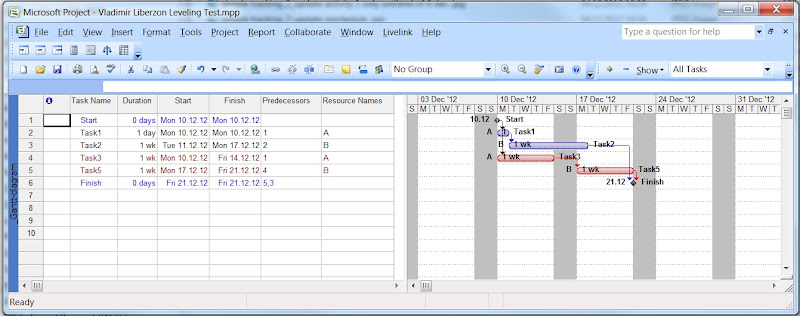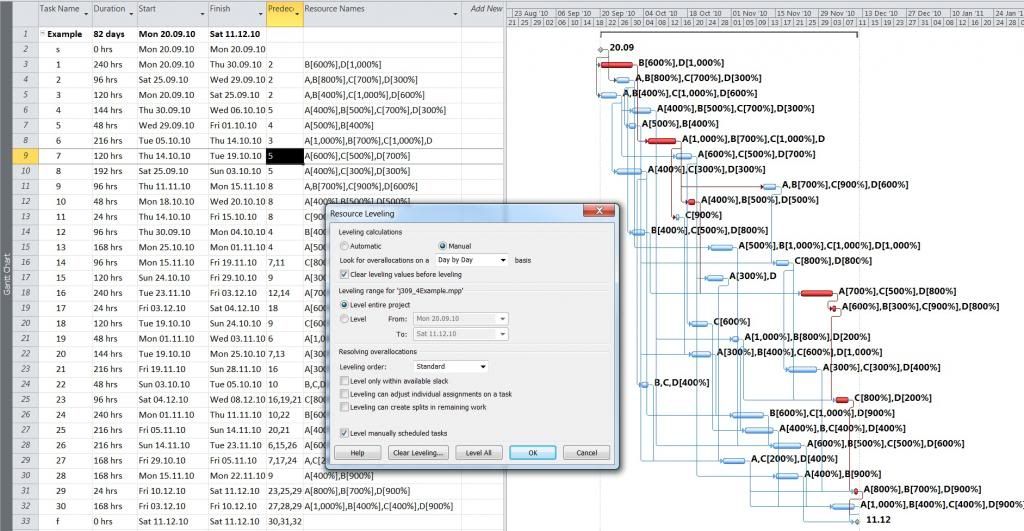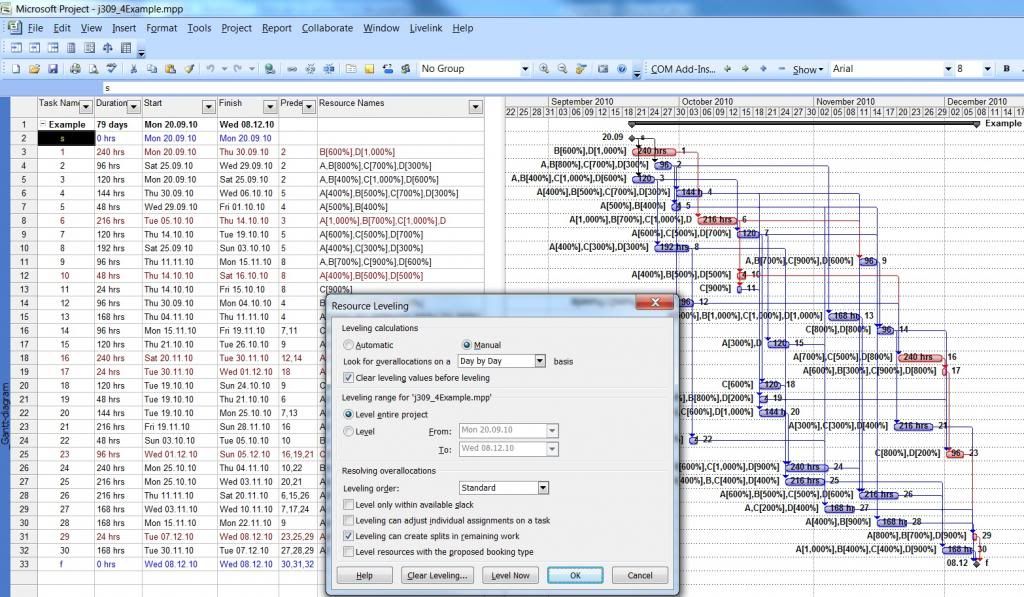Vladimir,
I tried the Asta Powerproject on what I call for myself a “Vladimir Liberzon resource leveling test”. A simple schedule with 2 resources and 4 tasks, which you showed in one of the forums here. I just found it very illustrative for the purpose of testing resource leveling intelligence of a tool

Powerproject did not pass this test, as well as Microsoft Project doesn't, but I noticed, that Spider also passes it only starting from “Optimization” Method and does not pass with Standard and Advanced method
Question: Do you have an example of a schedule, which shows different results for all 4 methods, available in Spider professional, just to demonstrate how resource constrained scheduling intelligence increases (and schedule duration presumably decreases) with advance of a scheduling Method used (and with advance of a Spider version price, where this Method is availble)?
Regards.
Evgeny









Replies